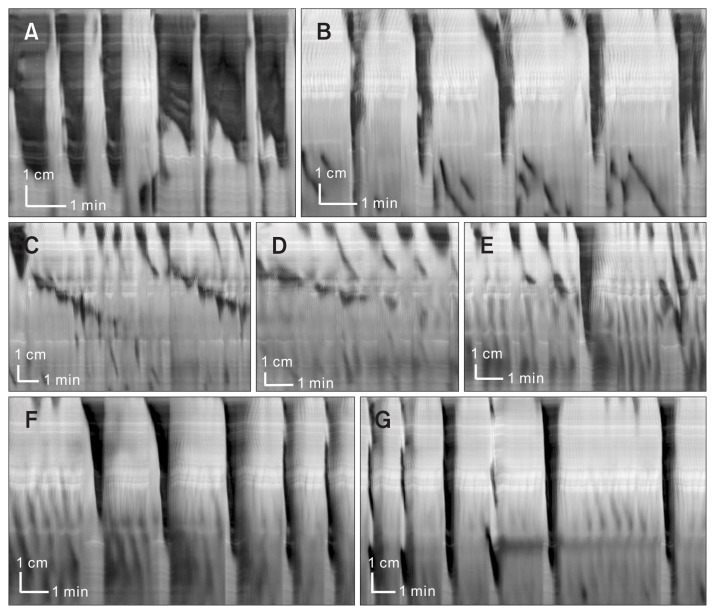Figure 3.
Bath addition of neurotensin (0.1–1 nM) abolishes long distance contractions (LDCs) and induces slow propagating segmental contractions; neurotensin (10–100 nM) restores LDC activity. Here we show in one experiment the actions of low and high concentrations of neurotensin. (A) Control activity shows prominent rhythmic LDC activity. (B) Neurotensin (0.1nM) was added 10 minutes before recording, the LDC frequency and width decreased, some distal rhythmic propagating motor complexes are present. (C) Neurotensin (0.5 nM) was added, abolishing LDC activity and evoking slow propagating segmental rhythmic waves of contraction. Note the rhythmic changes in amplitude (the on/off pattern of the slow propagating segmental contractions) and the presence of regular proximal contractions. (D) Neurotensin (1 nM) was added, continuing the patterns observed in (C). (E) Neurotensin (10 nM) was added, a transition is seen from the segmental pattern in (C) to the LDC pattern in (F). (F, G) Neurotensin (100 nM) completely restores LDC activity. (F) and (G) are sequential in time.

